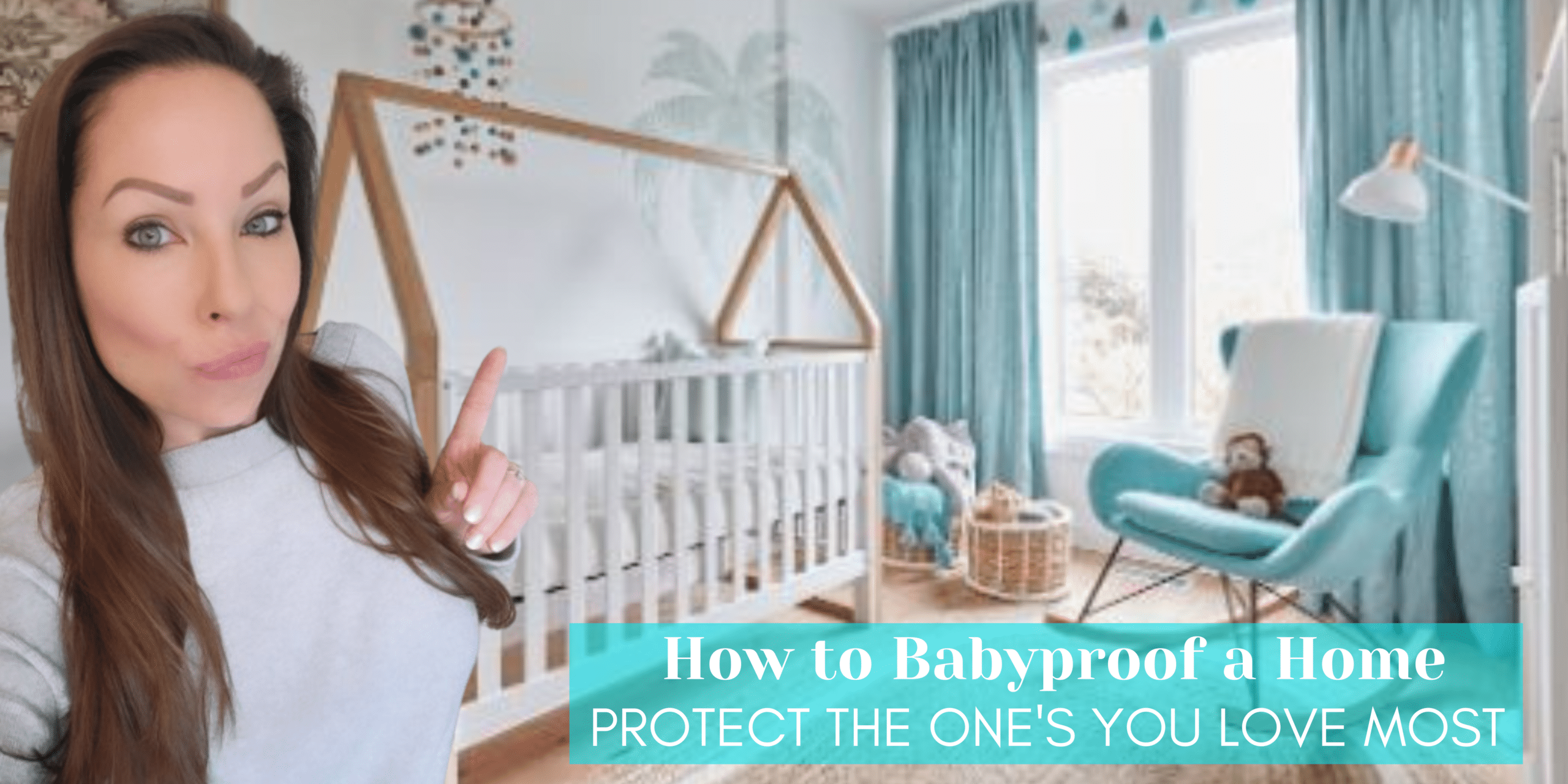
How to babyproof a home when you have a little one on the way. If this is something you’ve been trying to figure out, I’m here to help!
Could there be any question more important when you’re all set to welcome a little one into your family or recently did already? September was Baby Safety Month so I wanted to share some amazing baby proofing tips to help you prepare and keep your family safe.
First off, to babyproof a home, let’s start off with electrical. Were you aware that about 20% of electrical related injuries occur in children with the highest happening in toddlers along with adolescents. As you can likely appreciate, youngsters are naturally curious and they like to explore – which could mean putting their fingers, or other objects, into and on nearly everything. This can put them at a higher risk of an electric shock.
This can be scary, but aside from the incident itself, an electrical shock, even those with a lower voltage, can actually have long term impacts including memory loss, tingling and even anxiety.
One of the best ways to approach this is through prevention. The solution here is to replace your existing electrical outlets with tamper resistant receptables, also known as “TR” receptables. These receptacles have built in shutters that cover the slots in the plugs to help prevent anything from going in.
There are actually some areas in North America that require new homes to require these types of outlets installed. If you live in an older home however, chances are, you won’t have these. Double check and upgrade as necessary for more protection. There are some that even have an alarm that will alert parents if the GFCI has been tripped. This is especially important for outlets near water.
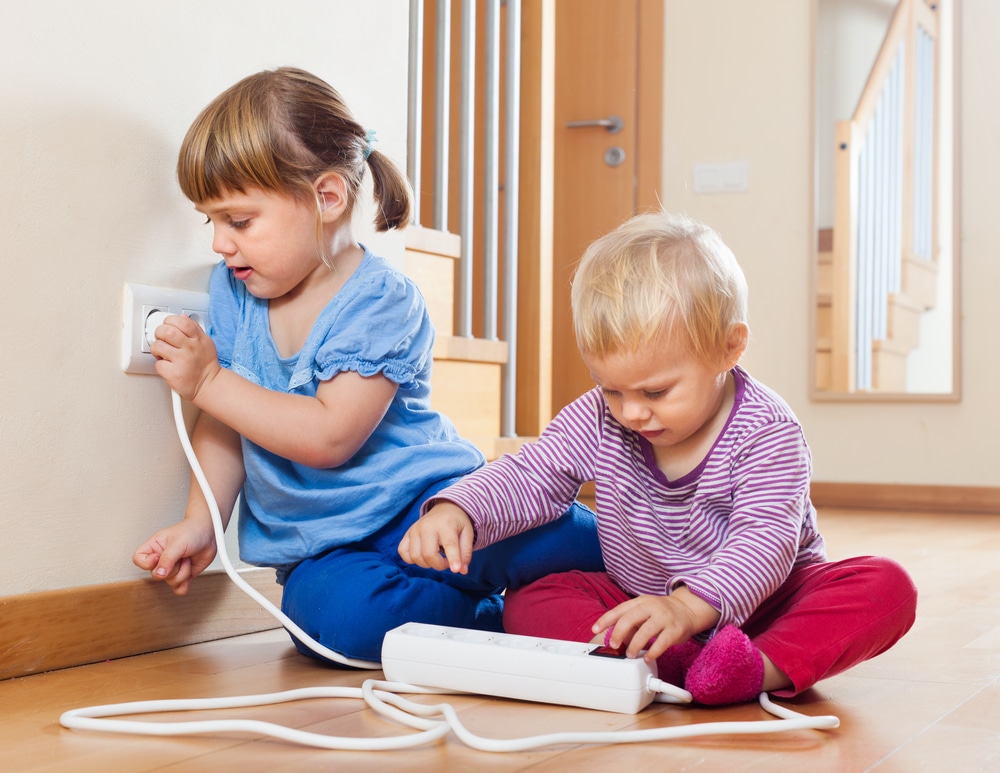
It may seem like common sense, if you’re going to babyproof a home, I should add a reminder to make sure that you never leave cables exposed where your young children can reach them. Most notably if they are connected to hot appliances such as curling irons/flat irons.
Another consideration is combination nightlight receptables for your kid’s rooms. They have models with dimmers as well.
How to baby proof a home doesn’t end with electrical. Let’s review options for lighting!
Installing occupancy and vacancy sensors is another great option. These sensors turn lights on/off using infrared and ultrasonic technology. This detects your presence so there is no need to mess around trying to find a light switch with an infant in your arms.
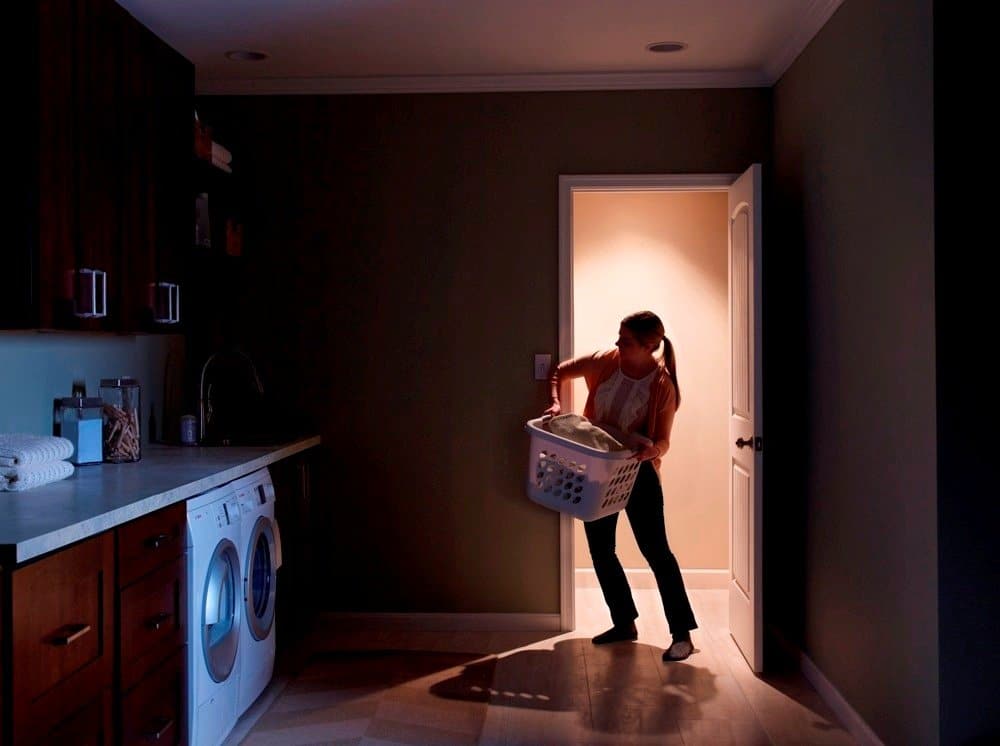
Moving along. How to baby proof your home when your little one starts to gain mobility. It’s all about the gates!
Depending on the layout of your home, you may want to consider gates to contain your child to a room so you can keep your eyes on them, but more importantly, you want to gate stairs to prevent any dangerous falls. There are gates that require wall mounts, which would of course, leave some lasting damage when you decide you don’t need them anymore. You may need to fill, patch, sand and paint over the holes created to hang them.
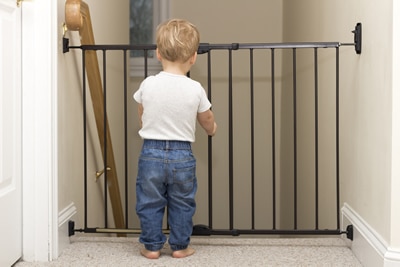
Credit – Canada.ca
How to babyproof your home has to include cabinet locks and anti-tip mechanisms for heavy furniture like TV’s and dressers.
When it comes to cabinet locks, one of the more popular babyproofing items these days are those you can install on the inside of the cabinet and you use a magnet on the outside. This leaves a nice, clean finish and you won’t have any unsightly straps on the outside or residue to remove from the cabinets when you eventually take them off.
It’s a good word of thumb to secure cabinets with any medicine, poisonous substances like cleaning agents or laundry/dish soap within them, anything sharp – or even things that can make a mess. I remember when my daughter was quite young, she just liked to pull everything out of the cupboards. It wasn’t necessarily anything that could hurt her but cleaning up after the constant messes did start to wear on us after awhile. So, on went the cabinet locks!
On the furniture side, did you know that there were actually millions of recalls for Ikea dressers and other heavy furniture because they were so prone to tipping? One thing about children is that they love to pull themselves up, especially when they are just learning out to walk. And even after they learn how to walk, they also love to climb! That makes securing heavy furniture extra important. The last thing you’d ever want is a serious injury from something tipping over and landing on your child.
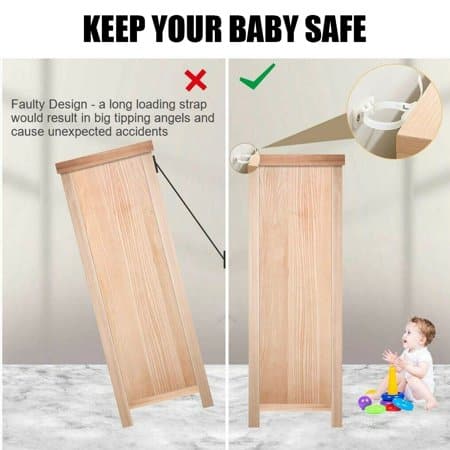
Another great product to leverage when you’re looking how to babyproof a home is door knob covers. This helps to prevent your child from going into an area that you don’t want them to have access to. At our house for example, we have these on the door to the basement as well as the door to the office. The last thing I need is for my daughter to get into my office and start messing around with sensitive equipment!
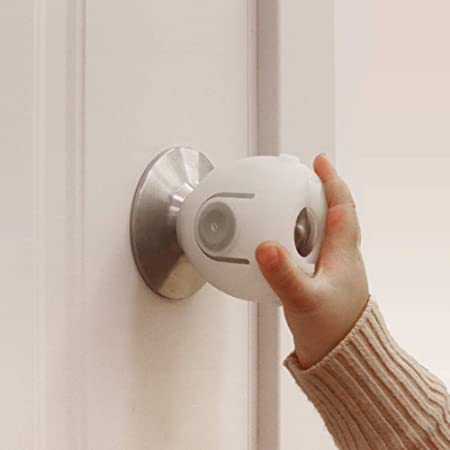
From a safety standpoint, when you’re wondering how else you can babyproof your house, you may also want to look at furniture edge/corner cushions. When I was just two years old, I fell off the couch in my family home and split my head open (literally, I have a huge scar that is about three inches long). If you have any sharp corners on coffee tables, end tables, fireplace mantles or other things, this is a wise investment.
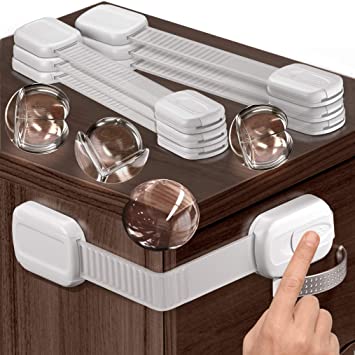
For the front of our mantle, we also cut a pool noodle in half so we could cover the long hard edge in addition to the corners. When babies are leaning how to walk, they fall over a lot, so we wanted to be extra careful of these things in our home.
While this may be less of a concern, a few other babyproofing products you may want to look into are stove and/or fridge locks (we got these but never ended up using them). If you live in an apartment/condo, you may want to invest in window protectors.
At the end of the day, you can shield your child from absolutely every danger out there, but you can do your best to minimize them. How to babyproof your home really starts with an awareness of the possible dangers that do exist so you can evaluate the risks and invest in in precautions to keep your family safe from harm.
I hope you’ve found these tips to be helpful!
If you need to make a move to accommodate the space you require for your growing family, don’t hesitate to touch base. I can be reached at 647.896.6584, by email at info@serenaholmesrealtor.com or by filling out this simple contact form.
For plenty of other great tips and real estate news, make sure you’re following me on social @serenaholmesrealtor and subscribed to my YouTube channel.










